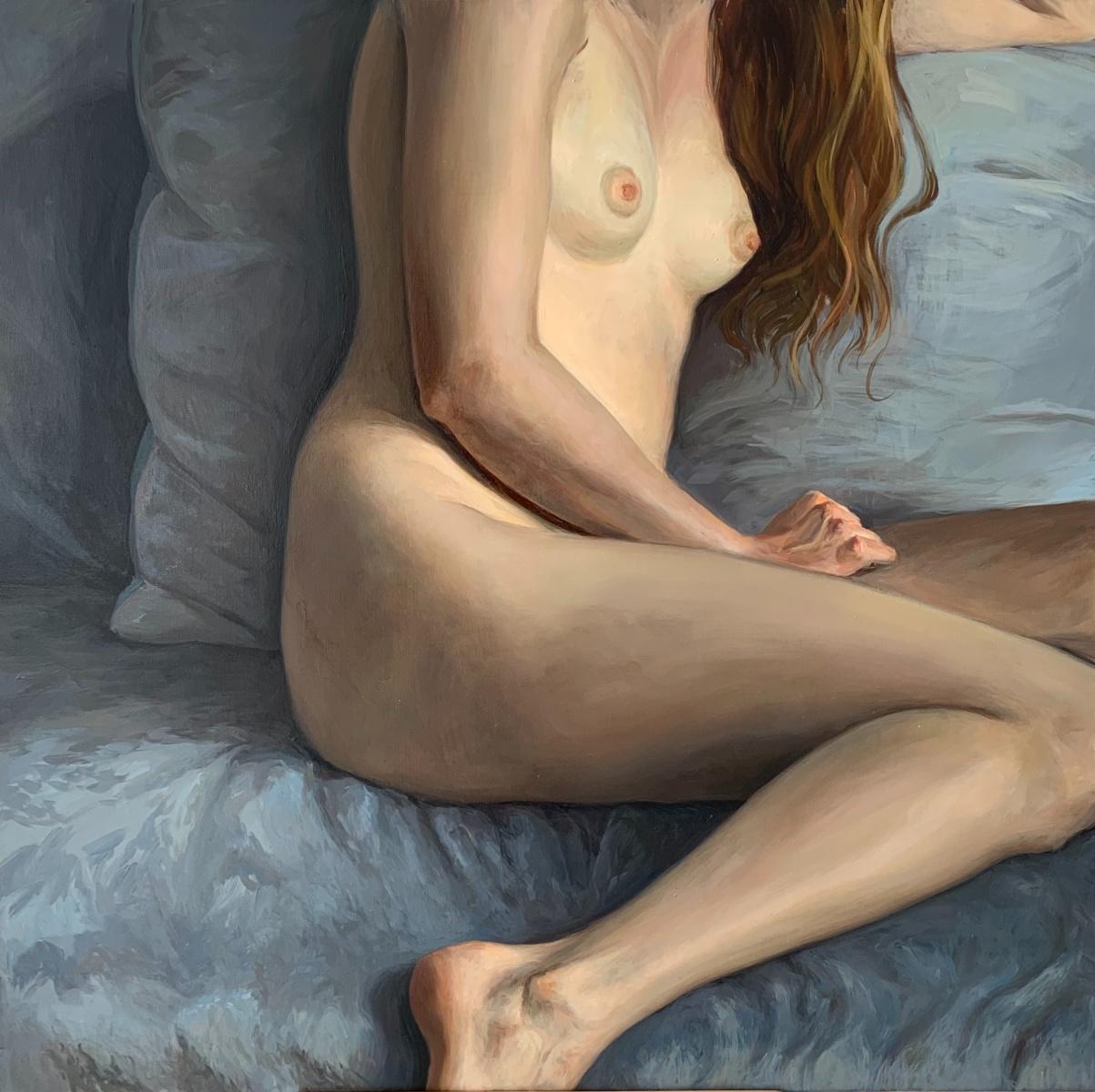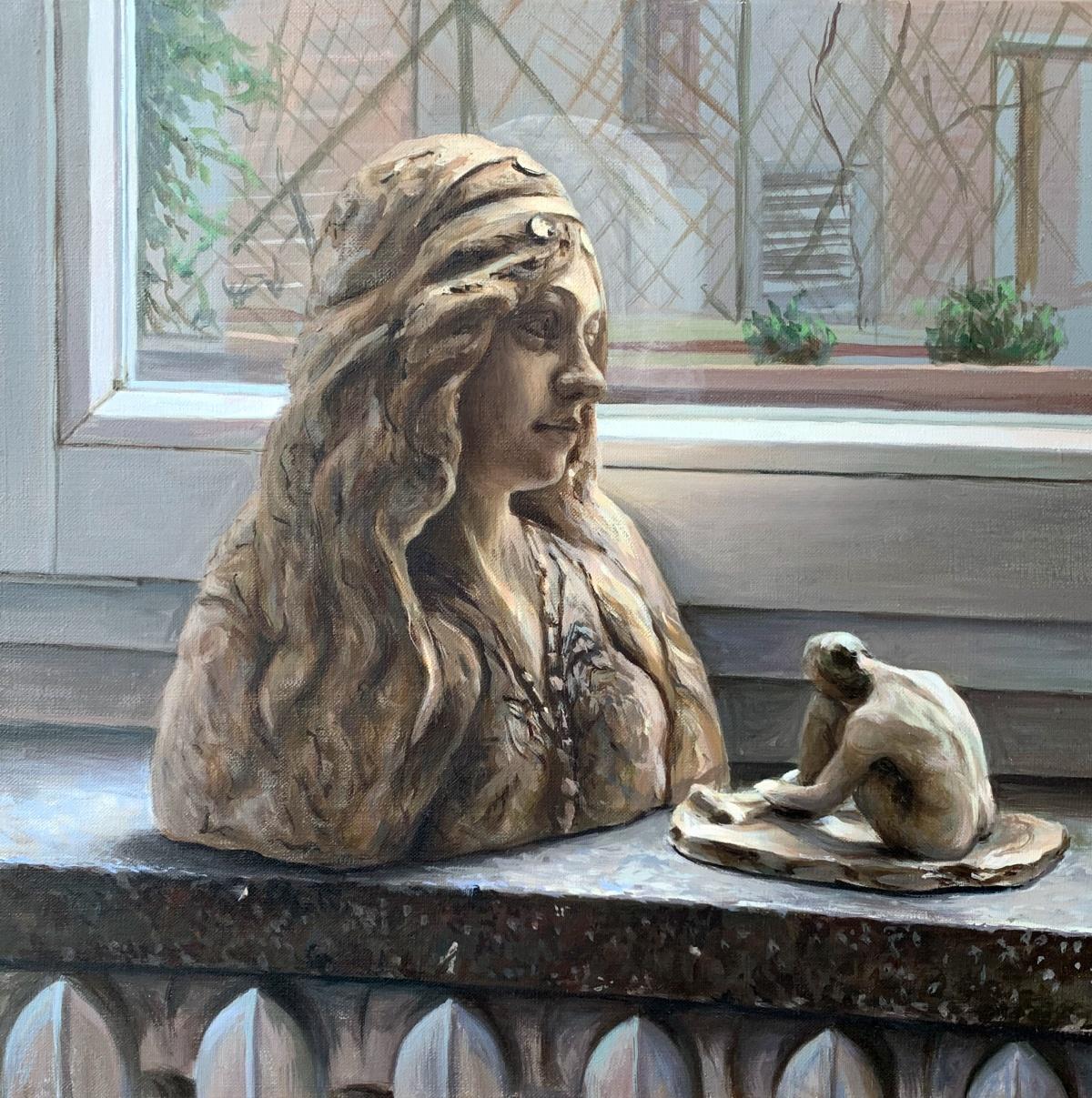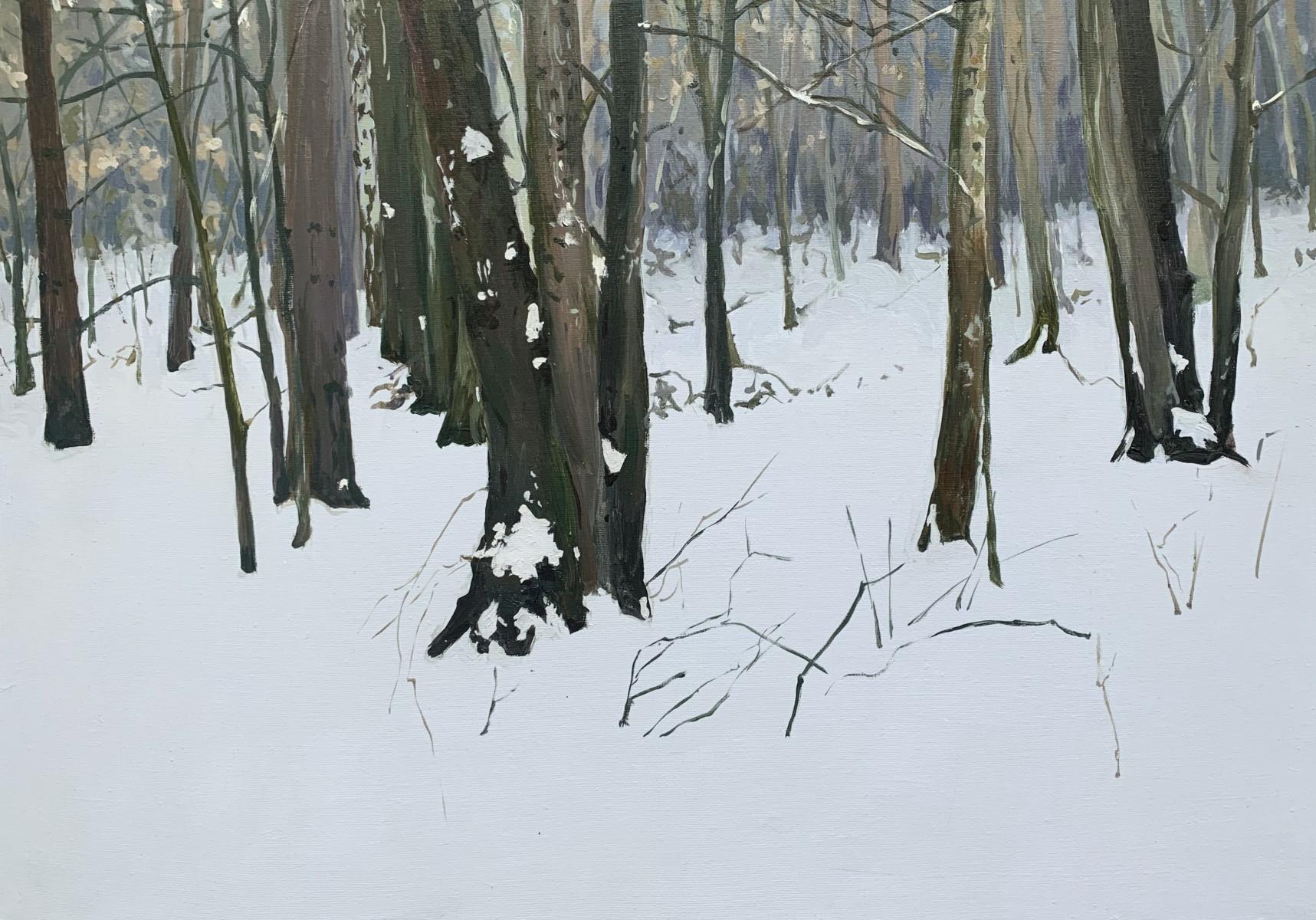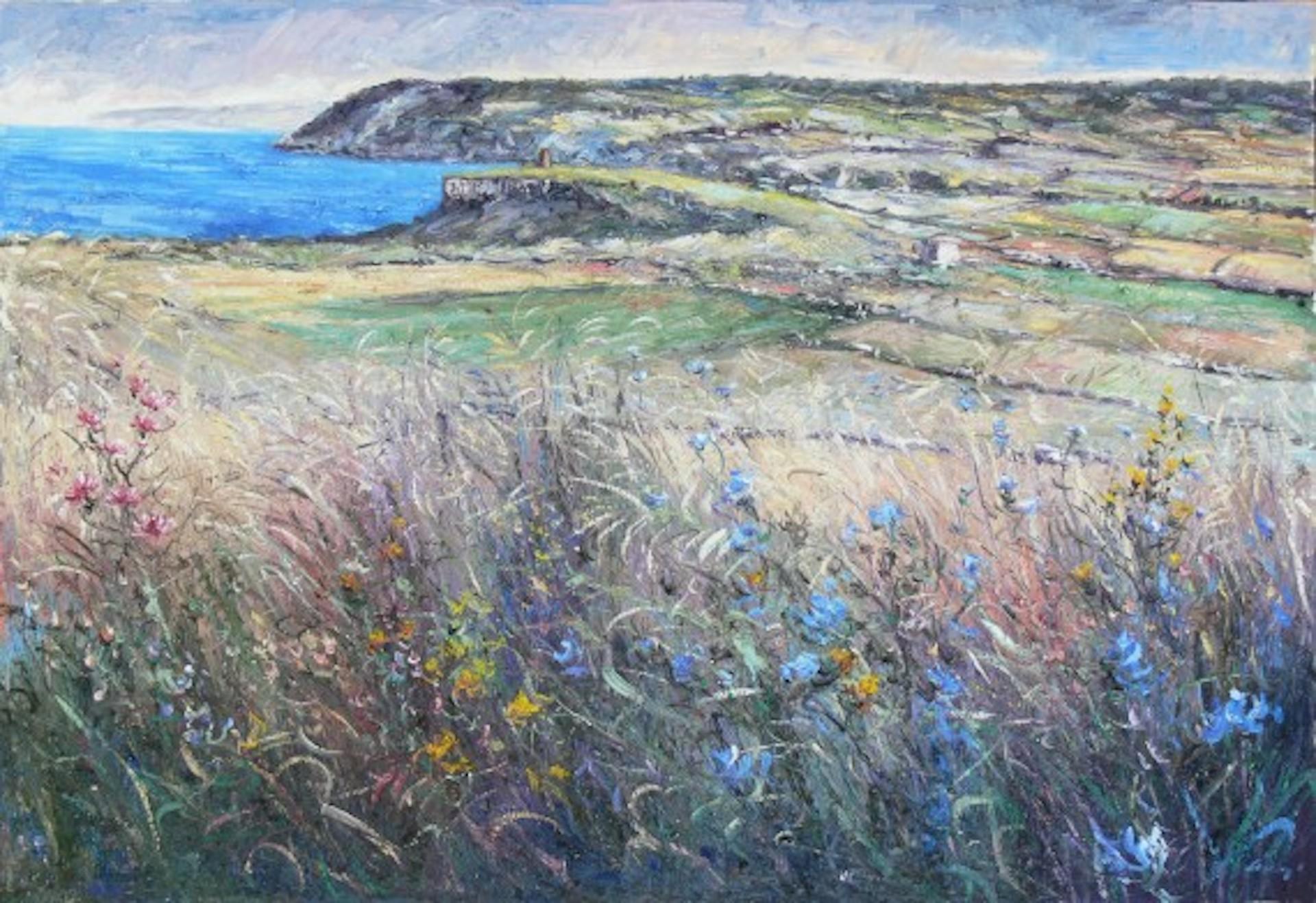Items Similar to Still Life of a Poppy, Iris and Peonies in a Glass Vase
Want more images or videos?
Request additional images or videos from the seller
Simon Pietersz VerelstStill Life of a Poppy, Iris and Peonies in a Glass Vase
About the Item
Oil on canvas
Image size: 23 1/4 x 19 1/2 inches (59 x 50 cm)
Dutch Ripple frame
PROVENANCE
Private Collection, London
Here a glass vase containing an exuberant display of flowers stands on a ledge. With only one known exception, Verelst included vases in all of his flower paintings.
The asymmetrical arrangement of the flowers fills most of the canvas and the vibrant bouquet contains peonies, a bearded iris and a poppy set amidst a perfusion of twisting leaves and stems. Poppies were one of Verelst's favourite flowers and were commonly featured in his still life's.
This painting shows a superb understanding of light and colour that is consistent with Verelst's other works. Indeed, the strong contrast between the brightly lit, the colourful blossoms and the surrounding darkness lends to the flowers and foliage a hyper realistic quality and a strong sense of three-dimensionality.
The Artist
Verelst was born in The Hague in 1644 and came from a family of painters. His brothers Johannes and Herman also became painters and, like Simon, were trained by their father.
In 1663 Simon became a member of the Confrérie Pictura, the painter's association in The Hague, and soon afterwards moved to nearby Vooburg with his brother Herman, who also painted flowers. In 1668 Simon he moved to London where the Duke of Buckingham became his principle patron and on 11 April 1669 he met with Samuel Pepys. He was enormously successful in London and his elegant portraits became popular for a time during the 1670s among court circles. He painted this portrait of Prince Rupert, son of Frederick V, Count Palatine and Elizabeth Stuart. King Charles II owned six of his paintings.
In 1709, according to Weyerman, he lived down the Strand in London with the art dealer William Lovejoy, who had him locked up for his bouts of unbridled aggression.
Simon Verelst was born in The Hague in 1644 as the son of the genre painter Pieter Verelst (c.1618–c.1678), who also produced a few still-lifes, and taught Simon the art of painting; Simon’s brother, Herman, also became a painter. In 1663 Simon moved to nearby Voorburg, and in that year also became a member of the painters’ society Confrerie Pictura. In 1668 or 1669 he travelled to London, where he established a reputation as a brilliant flower painter. He painted portraits, too, and was honoured by different writers of the time. After he had invited Samuel Pepys (1633–1703), Chief Secretary to the Admiralty of England and Member of Parliament, to his studio in 1669, the naval administrator expressed his great admiration for a flower piece in his famous diary, particularly for the natural representation of the water droplets, adding, ‘(…) a better picture I never saw in my whole life; and it is worth going twenty miles to see it’.
Verelst was extremely popular with the English aristocracy. King George II possessed no less than six flower pieces and three portraits by Verelst. The painter was honoured in Holland, too, during his lifetime. In 1707, Gerard de Lairesse considered him the best flower painter ever, while Jacob Campo Weyerman also recorded his admiration for Verelst. According to the latter biographer, his success went to his head, and in his arrogance Verelst called himself ‘den God der bloemen, en den Koning der Konterfyters’ (‘the God of the flowers, and the King of the painters’), and saw himself as equal to Charles II. In 1680 he went to Paris, where he worked for Louis Michiel.
Verelst primarily painted flower pieces, but also produced some still-lifes with fruit and birds, and a number of portraits. He generally did not sign or date his works. His flower bouquets are usually quite open and loosely arranged, with plenty of space between the stems and flowers. They are usually also asymmetrical, with a diagonal central axis, and reveal a certain degree of tonality., with bright and translucent colours.
Notable is the almost complete absence of insects and other small creatures, except for the occasional presence of butterflies. In leaves and other areas Verelst generally used a bright green varnish, applied on top of a yellow-grey base layer – the fragility of this upper glaze meant that they were injudiciously removed during later restorations more often than not.
Flower pieces by Verelst are preserved in many of the world’s leading museums and private collections, including the Fitzwilliam Museum in Cambridge, the Herzog Anton-Ulrich Museum in Braunschweig, the Szépmüvészeti Museum in Budapest, the Cleveland Museum of Art, the Statens Museum for Kunst in Copenhagen, the Wadsworth Atheneum in Hartford, Connecticut, the Ashmolean Museum in Oxford and the National Museum in Stockholm.
- Creator:Simon Pietersz Verelst (1644 - 1721)
- Dimensions:Height: 23.25 in (59.06 cm)Width: 19.5 in (49.53 cm)
- More Editions & Sizes:1 of 1Price: $62,140
- Medium:
- Movement & Style:
- Period:Late 17th Century
- Condition:
- Gallery Location:London, GB
- Reference Number:1stDibs: LU52411896062
About the Seller
5.0
Vetted Seller
These experienced sellers undergo a comprehensive evaluation by our team of in-house experts.
Established in 2007
1stDibs seller since 2014
64 sales on 1stDibs
Typical response time: 2 hours
- ShippingRetrieving quote...Ships From: London, United Kingdom
- Return PolicyA return for this item may be initiated within 14 days of delivery.
More From This SellerView All
- Botanical Study with RoseBy Carolyn SergeantLocated in London, GBOil on board Image size: 6 3/4 x 9 1/2 inches (17 x 24 cm) This delicate botanical study evokes the printed and painted flora that historically have been used as pattern books by artists and designers such as William Morris and Alexander MccQueen. This artwork paces emphasis on the aesthetic value of the plant while remaining scientifically and botanically correct. It reflects an intimate knowledge and understanding of the subject based on firsthand observation by the artist. Indeed, Sergeant has here sought out to understand the structure of the plant and to communicate it to her audience in an aesthetically pleasing manner. 'The greatest flower artists...Category
20th Century Naturalistic Still-life Paintings
MaterialsBoard, Oil
- The Kitchen TableBy Caroline HutchinsonLocated in London, GBOil on canvas, signed on the reverse Image size: 19 1/2 x 23 1/4 inches (49.5 x 59 cm) Contemporary frame This still life provides an example of neo-impressionism, specifically of m...Category
Mid-20th Century Still-life Paintings
MaterialsOil, Canvas
- Study of Pink Lily and Peony, Contemporary Still LifeBy Jeremy AndrewsLocated in London, GBOil on canvas, signed and titled on reverse Image size: 12 x 16 inches (31 x 40 1/2 cm)Category
21st Century and Contemporary Still-life Paintings
MaterialsOil, Canvas
- Still Life with fruit and Delft plateLocated in London, GBOil on canvas Image size: 15 ½ x 19 ¼ inches (39.5 x 49 cm) 18th Century carved gilt frame Provenance Irish Country Estate This complex and convincing composition is painted from a...Category
17th Century Still-life Paintings
MaterialsOil, Canvas
- Summer Flowers 20th Century Modern BritishBy Gordon ScottLocated in London, GBGordon Scott ARCA 1914 - 2016 Summer Flowers Oil on canvas, signed lower left Image size: 23.5 x 20 inches Contemporary style frame Gordon Scott was trained at the Royal College of Art (1934-38) under Gilbert Spencer, Alan Sorrell and Charles Mahoney. In 1938 he was awarded a Travelling Scholarship by the R.C.A. for painting. A reserved and highly principled man, during WWII he was a conscientious objector, stationed at Bulford Camp on Salisbury Plain. His defined role there is unknown, but during his time there he produced a number of sketches and paintings of soldiers and other personnel who passed through the camp. In 1946 Joseph Dixon...Category
20th Century Modern Still-life Paintings
MaterialsOil, Canvas
- Still Life of Apples in Fruit BowlLocated in London, GBOil on canvas Image size: 13 1/2 x 11 1/2 inches (34.25 x 29 cm) Original Giltwood frame It is likely that this work was inspired by Matthew Smith's wor...Category
Early 20th Century Impressionist Still-life Paintings
MaterialsCanvas, Oil
You May Also Like
- Nude - Figurative Oil Realistic painting, Polish young artistLocated in Warsaw, PLAGNIESZKA STAAK-JANCZARSKA (born in 1994) A graduate of the State Secondary School of Art of Józef Kluza in Krakow. In 2020, she graduated from the Academy of Fine Arts in Krakow in ...Category
2010s Naturalistic Figurative Paintings
MaterialsCanvas, Oil
- Meditation - Figurative Oil Realistic painting, Interior, Polish young artistLocated in Warsaw, PLAGNIESZKA STAAK-JANCZARSKA (born in 1994) A graduate of the State Secondary School of Art of Józef Kluza in Krakow. In 2020, she graduated from the Academy of Fine Arts in Krakow in ...Category
2010s Naturalistic Figurative Paintings
MaterialsOil, Canvas
- In snow - Figurative Oil Realistic painting, Landscape, Polish young artistLocated in Warsaw, PLAGNIESZKA STAAK-JANCZARSKA (born in 1994) A graduate of the State Secondary School of Art of Józef Kluza in Krakow. In 2020, she graduated from the Academy of Fine Arts in Krakow in ...Category
2010s Naturalistic Figurative Paintings
MaterialsCanvas, Oil
- Prologue - Figurative Oil Realistic painting, Interior, Polish young artistLocated in Warsaw, PLAGNIESZKA STAAK-JANCZARSKA (born in 1994) A graduate of the State Secondary School of Art of Józef Kluza in Krakow. In 2020, she graduated from the Academy of Fine Arts in Krakow in ...Category
2010s Naturalistic Figurative Paintings
MaterialsOil, Canvas
- "A bright still life with pomegranates and lemons." by Lilia VolskayaLocated in Zofingen, AGThe paintings are drawn with oil on the canvas with stretcher A bright still life with pomegranates and lemons. The national Armenian headscarf is on a dark background. There is a s...Category
2010s Naturalistic Still-life Paintings
MaterialsLacquer, Canvas, Oil
- Uniche Sensazioni Torre S.Emiliano, Amedeo Cianci, Original Oil PaintingLocated in Deddington, GBUniche sensazioni Torre S.Emiliano by Amedeo Cianci [2017] original Olio su tela Image size: H:100 cm x W:150 cm Complete Size of Unframed Work: H:100 cm x W:150 cm x D:2cm Sold Unf...Category
21st Century and Contemporary Naturalistic Landscape Paintings
MaterialsCanvas, Oil
Recently Viewed
View AllMore Ways To Browse
Set Of Still Life
A Better World
Circle Of Life
Circle Of Life Paintings
4 Paintings In A Set
Water Color Still Life
Painting And Water Glass
Painting Of A Glass Of Water
Antique Peony
17th Still Life
Still Life 17th Century
Still Life Birds Paintings
Herman Stilling
English Still Life Paintings
17th Still Life Art
Bird And Still Life Painting
God Father
Six Still Life Paintings





